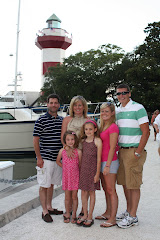It is quite intriguing to think about why we need to consider curriculum since our school district is hard at work trying to decide the best approach to align the curriculum throughout grades K-12. As teachers, curriculum is important because we need a purpose for what we are teaching and why is it important. It also serves as guidelines to follow to make sure we are covering the necessary material at a reasonable pace in order to cover all material required for the year. As administrators, curriculum provides guidelines to follow to monitor teacher’s progress and it also serves as an accountability tool.
I found it difficult to respond to the model of curriculum that best fits my current role. I reread areas of Applebee’s article several times trying to find which style my job relates to. I finally decided that in teaching small group math intervention, the catalog structure seems to fit the description. Since I have a short period of time with these students each day, memorization and recitation is really the only approach to use in this situation. I realize this may not seem like the best option but my job is to teach them the facts so hopefully the classroom teacher can use different techniques and different curriculum strategies to build knowledge from one content area to another. I also consider my position as being a closed conversation model.. again having such a young age and so little time we can’t participate with equal status and have meaningful conversation. My groups closely fit the definition of one part (me) as being higher in status directly instructing the lower (students).
It seems that the episodic model best fits the definition for an effective curriculum. This model encourages conversation where students learn more and have a deeper understanding of material. So naturally this model seems ideal but do schools/teachers really use this model on a consistent basis?
While reading and contemplating on Wiggin’s article on trying to teach everything of importance, the same thoughts kept running through my head. What could modern curriculum look like? As Wiggins continually stresses the importance of questioning and students being comfortable doing so, this would be a necessary place to begin. The direction of the courses would be on the foundation of student questioning. The “so called lesson plans” would not be the basis for instruction. Teachers and students would have to be flexible to go where the questioning leads within boundaries of the content area. A modern curriculum would allow students to use prior knowledge, hands on activities, and newly acquired knowledge together to prepare them for life after high school. They would not be strapped to the contents of a textbook and could move at a pace that best suits the class. Open communication would be a key concept in succeeding in a modern curriculum.
It seems obvious to me that a new approach to curriculum would be ideal. Although it can be comfortable having a scope and sequence, lesson plans, etc. to rely on, moving toward new ways of helping students succeed in life is essential. While there are lots of successful students graduating, there are also lots of students who are not. This tells me that a more modern curriculum might enable a larger population of students to excel during and after high school.
Subscribe to:
Post Comments (Atom)

I agree that having a scope and sequence is comfortable maybe even more so for new teachers but I also like the idea of a new approach to help more and more of our students succeed. I also found it difficult to find a model that truly best suited me. As I read I could see parts of each one in my classroom it was eye opening.
ReplyDeleteI also agree that having a scope and sequence may be more comfortable than the other types of curriculum. Thinking back to my first year of teaching, I remember being very hesitant to step outside of the guidelines and try something new. Now, with some experience under my belt (not much, but some) I try new things all of the time! Teaching is much more fun this way; and it benefits the students.
ReplyDeleteHey Dana- I really enjoyed your post--especially about the way your specific job requires a different model of curriculum. I think this raises a really great point about how everyone in a school does not need to subscribe to the same model of curriculum. Maybe it is better that way so we do meet different students' needs in different ways. For example, perhaps the kids you see are not responding to the way curriculum is being enacted in their classrooms and need a different model. We are all different learners right? That said- should there be one consistent model for schools-or within a school? Does it get too disjointed if everyone is using curriculum differently? As a teacher who works with specific students on specific skills what do you think about that?
ReplyDeleteFrom my viewpoint there is no way to have one consistent model within our school. We have so many different interventions plus regular special education pullout-- that would be impossible. And yes it does get disjointed at times because the classroom teacher tries to follow the curriculum as closely as possible yet it is not feasible for me to do so. Ironically we had a meeting after school today discussing these problems. Luckily we have a great working relationship amongst the teachers and we always seem to work out the kinks. Actually the teacher is so glad to get intervention assistance, they will do all they can to bridge the gap. I work in a great environment..so lucky, I know.
ReplyDelete